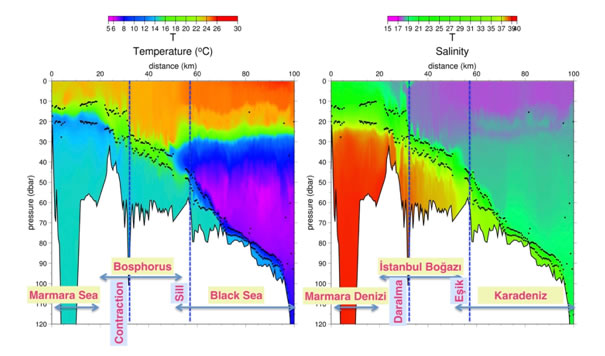Observations page 1
The first scientific observations in the Bosphorus, concurrent with the first evolution of science, shortly after the age of Galileo, was made by Marsili (1681). These unique measurements signaled the rise of the science of oceanography, establishing the beginnings of the theory of buoyancy currents, until rediscovered almost three centuries later in the context of strait dynamics (Defant, 1961). The early Bosphorus measurements were the first of its kind in history, obtained in an age much before modern measurements technology, but still shown to be sufficiently accurate to match modern measurements (Pinardi, 2007; Pinardi et al., 2018).
Contemporary measurements on the hydrography and circulation of the TSS based on modern instrumentation have only been obtained since the 1980’s. The first large-scale observations program was carried out in baseline studies for the İstanbul Water and Sewerage Administration (İSKİ) in the early 1990’s, in relation to the waste discharges system operated and since then being developed by the İstanbul city. Measurements in the Bosphorus and Dardanelles Straits and their exit regions as well as the Marmara Sea proper have been reported byÜnlüata et al. (1990), Latif et al. (1991), Beşiktepe (1991) and Beşiktepe et al. (1993, 1994, 2000), Özsoy et al. (1995, 1996, 1998, 2000, 2001), Gregg et al. (1999), Gregg and Özsoy (1999, 2002), Jarosz et al. (2011a,b, 2012, 2013), Book et al. (2014), Tutsak (2012), Tutsak et al. (2010, 2016), Özsoy and Altıok, 2016a,b; Özsoy et al., 2016) and Dorrell et al. (2016).

Fig. 2.1 The fine-scale features of the temperature and salinity measurements in the Bosphorus Strait based on the 1994 measurements (Özsoy et al., 2001), showing the possibility of hydraulic controls at the contraction and the sill.